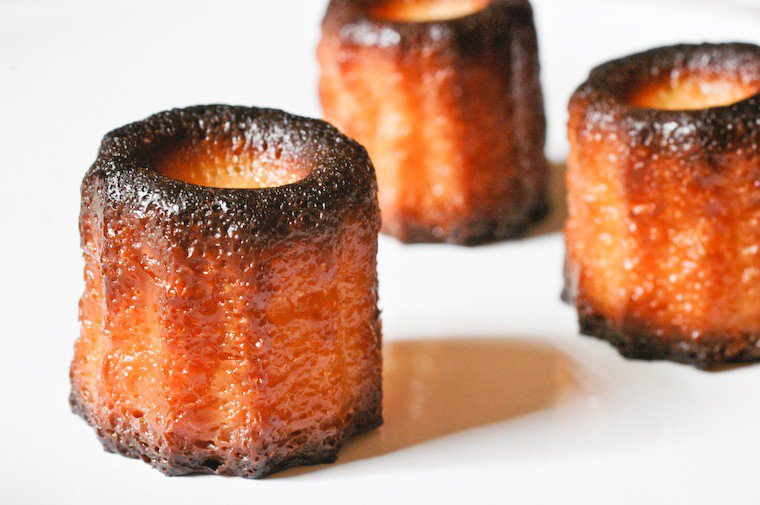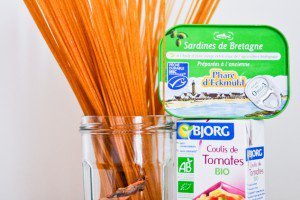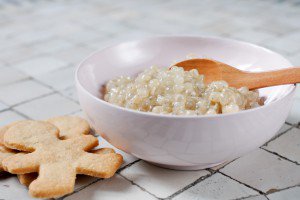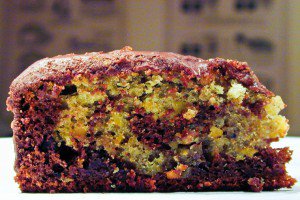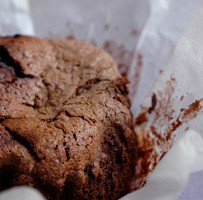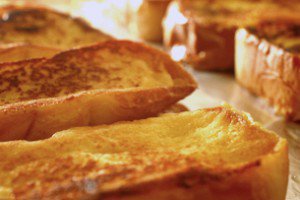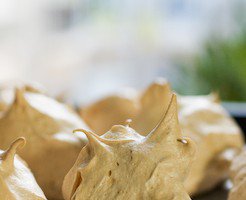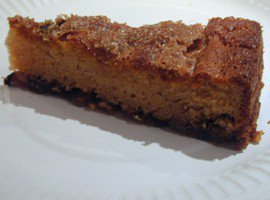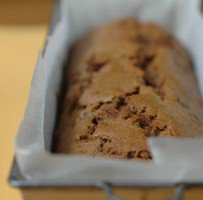I tasted my first canelé some seven years ago, at Eric Kayser’s boulangerie on rue Monge. Maxence had a friend who lived nearby, they often worked on school projects together, and whenever they felt like a break and a snack, this is where they would go. Maxence adored their canelés, ordered them often, and made me try them.
Delicious. Simply delicious.
Canelés (alternate spelling: cannelés) are made from a batter that resembles a crepe batter. It is poured into copper molds of a special cylinder shape (sort of like a short section of a Roman tower) and baked at a high temperature until a darkly caramelized crust develops, hiding and protecting a moist, tender and slightly chewy heart. The batter also calls for vanilla and rum, so canelés are intensely flavored but not too sweet, and they have a freshness, a cleanness of taste that makes you want to eat half a dozen in one sitting. But of course, um, you don’t. You do, however, eat them for breakfast, dessert or just a snack in the afternoon.
Canelés are a specialty from Bordeaux that dates back (most likely) from the 18th century. It remained pretty obscure for centuries until a brotherhood of the canelé was created to promote it in the 80’s. Their efforts were very successful and the canelé came back in style over the following years — it can now be found in almost every boulangerie in Paris. (A cynical and/or well-informed friend told me once that pastry stores loved canelés because they keep really well and you can just keep selling the same stale ones for days before you have to throw them out.)
The traditional canelé is baked in copper molds, but those are pricy and rather tedious to use (you have to butter or beeswax them like your life depends on it), so nowadays home bakers use silicone molds — not exactly the same results, but good enough.
Maxence bought ours at a market stand on vacation a few years ago, and I’ve been using my aunt’s recipe to make frequent batches of canelés.
The batter is so easy to put together it’s really laughable, and then it’s just a matter of waiting — for the batter to rest, and for the canelés to bake and cool down. They keep very well for a few days in a metal box: the crust will soften (some people like that) but you can just put them back into the warm oven (say 200° C, or 400 °F) for five minutes and then let them cool again before eating: they will regain some of their original crustiness.
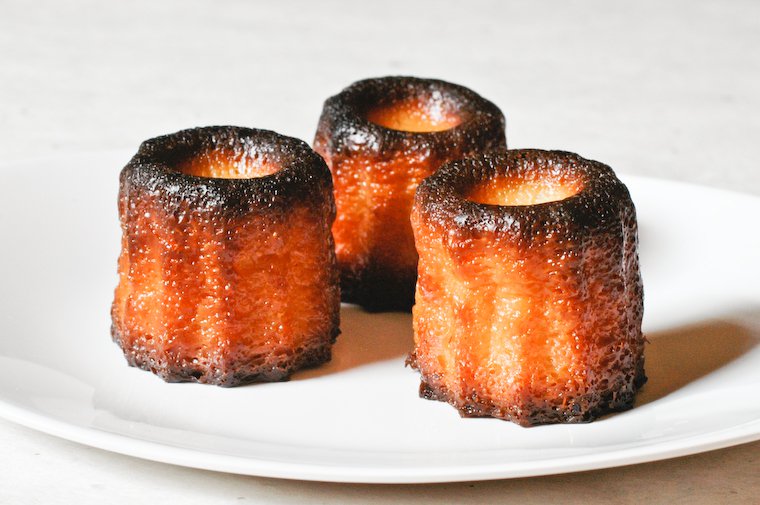

Have you tried this? Share your pics on Instagram!
Please tag your pictures with #cnzrecipes. I'll share my favorites!
Ingredients
- 500 ml (2 cups) milk
- 30 g (2 tablespoons) semi-salted butter, diced
- 1 vanilla pod, split, or 1 teaspoon vanilla extract or paste
- 100 g (3/4 cup) all-purpose flour
- 1 teaspoon fine sea salt
- 180 g (1 cup minus 2 tablespoons) sugar
- 3 eggs
- 80 ml (1/3 cup) good-quality rum
Instructions
- Combine the milk, butter and vanilla in a medium saucepan, and bring to a simmer.
- In the meantime, combine the flour, salt, and sugar in a medium mixing-bowl.
- Break the eggs in another, smaller bowl, and beat gently without incorporating air.
- When the milk mixture starts to simmer, remove from heat, fish out the vanilla pod if using, and set aside to cool for 15 minutes.
- Pour the eggs all at once into the flour mixture (don't stir yet), add in the milk mixture, and stir until well combined (do not whisk).
- Scrape the seeds from the vanilla pod with the dull side of a knife blade, and return the seeds and pod to the mixture. Add the rum and stir.
- Let cool to room temperature on the counter, then cover and refrigerate for at least 24 hours and up to 3 days.
- The next day (or the day after that, or the day after that), preheat the oven to 250° C (480° F).
- Butter the canelé molds if they are made of copper (unnecessary if you're using silicone molds). Remove the batter from the fridge: it will have separated a bit, so stir until well blended again, without whisking or incorporating air.
- Pour into the prepared molds, filling them almost to the top.
- Put into the oven to bake for 20 minutes, then (without opening the oven door) lower the heat to 200° C (400° F) and bake for another 30 to 40 minutes, depending on your oven and how you like your canelés.
- The canelés are ready when the bottoms are a very dark brown, but not burnt. If you feel they are darkening too fast, cover the molds with a piece of parchment paper.
- Unmold onto a cooling rack (wait for about 10 minutes first if you're using silicon molds or they will collapse a little) and let cool completely before eating.
This post was first published in October 2005 and updated in March 2016.


